View in other NatureServe Network Field Guides
NatureServe
Montana
Utah
Wyoming
Idaho
Wisconsin
British Columbia
South Carolina
Yukon
California
New York
Prairie Sedge - Carex prairea
State Rank Reason (see State Rank above)
Rare in Montana, where it is currently known from a small area in the northwest corner of the state. The potential for negative impacts to the popoulations appears to be low.
General Description
Densely caespitose. Stems erect, 30–60 cm. Leaves: basal and cauline; cauline sheaths coppery opposite the blades that are 1–3 mm wide. Inflorescence elongate, of several, sessile, ascending spikes, overlapping above, separate and sometimes branched below; lowest bract inconspicuous. Spikes 3–6 mm long, all similar, male flowers above, female below or all female. Perigynia ascending, lanceolate, tan to brown, glabrous, serrulate-margined, 3–4 mm tapered to the flattened, grooved beak, 1.5–2 mm long; stigmas 2. Female scales brown lanceolate, concealing the perigynia. Achene 2-sided, filling the perigynium (
Lesica et al. 2012. Manual of Montana Vascular Plants. BRIT Press. Fort Worth, TX).
Phenology
Fruiting mid-July through August.
Diagnostic Characteristics
Carex prairea is somewhat intermediate between C. diandra and C. cusickii; distinguished from the former by having leaf sheaths that are copper colored inside at the mouth, more open flowering heads, and dull perigynia. Carex cusickii also has copper colored sheaths and open heads but has wider leaves and brownish-black perigynia. A hand lens or microscope and technical key are needed for positive identification.
Species Range
Montana Range
Range Descriptions

 Native
Native
Range Comments
YT to NL south to MT, IL, VA. Known from Lincoln County (Lesica et al. 2012. Manual of Montana Vascular Plants. BRIT Press. Fort Worth, TX).
Observations in Montana Natural Heritage Program Database
Number of Observations: 21
(Click on the following maps and charts to see full sized version)
Map Help and Descriptions
Relative Density
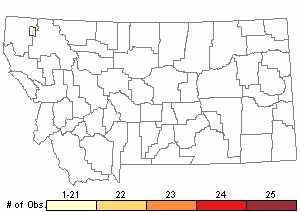
Recency
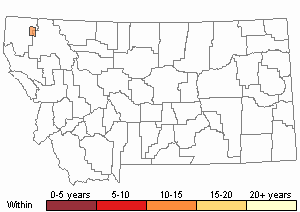
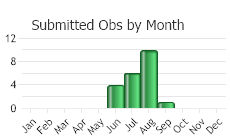
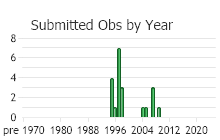
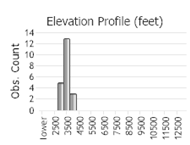 (Observations spanning multiple months or years are excluded from time charts)
(Observations spanning multiple months or years are excluded from time charts)
Habitat
Rich fen with alluvium derived from calcareous glacial till in the valley zone.
National Vegetation Classification System Groups Associated with this Species
Wetland and Riparian
Peatland
Stewardship Responsibility
Threats or Limiting Factors
STATE THREAT SCORE REASON
Threat impact not assigned because threats are not known (MTNHP Threat Assessment 2021).
References
- Literature Cited AboveLegend:
 View Online Publication
View Online Publication Lesica, P., M.T. Lavin, and P.F. Stickney. 2012. Manual of Montana Vascular Plants. Fort Worth, TX: BRIT Press. viii + 771 p.
Lesica, P., M.T. Lavin, and P.F. Stickney. 2012. Manual of Montana Vascular Plants. Fort Worth, TX: BRIT Press. viii + 771 p. MTNHP Threat Assessment. 2021. State Threat Score Assignment and Assessment of Reported Threats from 2006 to 2021 for State-listed Vascular Plants. Botany Program, Montana Natural Heritage Program, Helena, Montana.
MTNHP Threat Assessment. 2021. State Threat Score Assignment and Assessment of Reported Threats from 2006 to 2021 for State-listed Vascular Plants. Botany Program, Montana Natural Heritage Program, Helena, Montana.
- Additional ReferencesLegend:
 View Online Publication
View Online Publication
Do you know of a citation we're missing? Lesica, P., M.T. Lavin, and P.F. Stickney. 2022. Manual of Montana Vascular Plants, Second Edition. Fort Worth, TX: BRIT Press. viii + 779 p.
Lesica, P., M.T. Lavin, and P.F. Stickney. 2022. Manual of Montana Vascular Plants, Second Edition. Fort Worth, TX: BRIT Press. viii + 779 p.
- Web Search Engines for Articles on "Prairie Sedge"





